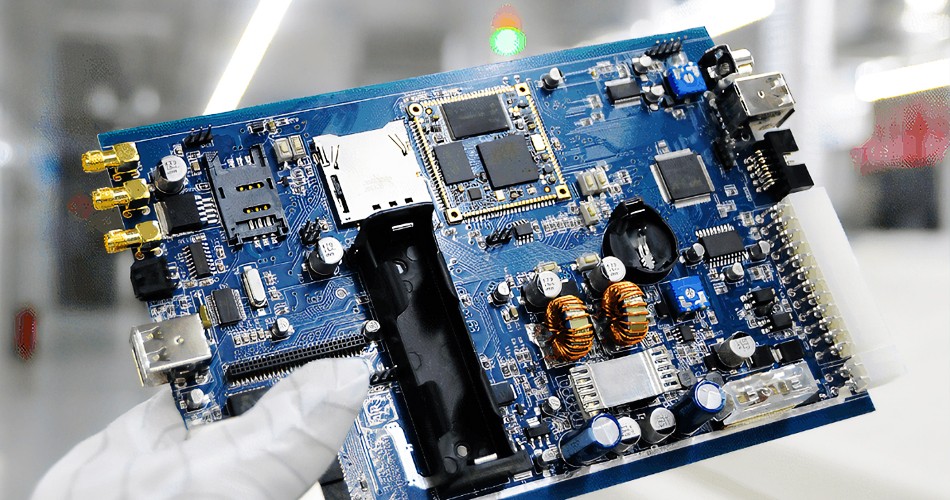- English
- Español
- Português
- русский
- Français
- 日本語
- Deutsch
- tiếng Việt
- Italiano
- Nederlands
- ภาษาไทย
- Polski
- 한국어
- Svenska
- magyar
- Malay
- বাংলা ভাষার
- Dansk
- Suomi
- हिन्दी
- Pilipino
- Türkçe
- Gaeilge
- العربية
- Indonesia
- Norsk
- تمل
- český
- ελληνικά
- український
- Javanese
- فارسی
- தமிழ்
- తెలుగు
- नेपाली
- Burmese
- български
- ລາວ
- Latine
- Қазақша
- Euskal
- Azərbaycan
- Slovenský jazyk
- Македонски
- Lietuvos
- Eesti Keel
- Română
- Slovenski
- मराठी
- Srpski језик
PCBA Thermal Management Strategy: Design of Heat Sinks, Heat Sinks, and Fans
2024-06-18
In PCBA design, effective thermal management strategies are essential, especially for high-performance, high-power or high-temperature applications. The following are design strategies for heat sinks, heat sinks, and fans:

1. Heat Sink Design:
A heat sink is a device used to increase the surface area for better heat dissipation. The following are considerations for heat sink design:
Material Selection: Select materials with high thermal conductivity, such as aluminum or copper, to make heat sinks. These materials help transfer heat from the heat source (such as the CPU or power amplifier) to the heat sink surface.
Surface Area and Structure: Design the shape and structure of the heat sink to maximize its surface area. This helps improve the heat dissipation efficiency of the heat sink.
Heat Sink Design: The heat sink on the heat sink can increase the heat dissipation surface area. Consider the number, shape, and arrangement of the heat sink when designing.
Heat Pipes: Heat pipes are devices that can effectively transfer heat from the heat source to other parts of the heat sink.
2. Heat Spreaders Design:
Heat sinks are components used to distribute and evenly dissipate heat, usually located between the heat source and the heat sink. The following are considerations for heat sink design:
Material Selection: Select materials with good thermal conductivity, such as copper or aluminum, to make heat sinks.
Size and Shape: Design the size and shape of the heat sink to ensure that it can effectively distribute heat.
Thermal Interface Material: Use thermal interface materials with high thermal conductivity, such as thermal pads or thermal grease, to ensure that heat can be effectively transferred to the heat sink.
3. Fans Design:
Fans can increase the heat dissipation effect by air flow. The following are considerations for fan design:
Fan Type: Select the appropriate type of fan, such as axial fans or centrifugal fans, based on the heat dissipation needs and space constraints.
Fan Size: Determine the size of the fan to ensure that it can provide sufficient air flow while fitting the size of the PCBA.
Layout and Position: Mount the fan in the appropriate location on the PCBA to ensure that it can cover the heat source and heat sink.
Duct design: Design ducts or heat shields to direct air flow to heat sources and heat sinks.
Fan control: Use temperature sensors and fan control circuits to automatically adjust fan speeds based on PCBA temperature requirements.
Noise and vibration control: Consider fan noise and vibration issues, especially in noise-sensitive or vibration-sensitive applications. Choose low-noise and low-vibration fan models, or use vibration isolation measures to reduce vibration transmission.
Maintenance and life: Choose high-quality fans to reduce maintenance requirements and increase life. Clean and maintain fans regularly to ensure that their performance is not affected.
Safety: Ensure fan safety to prevent operator injury. Use protective covers or warning signs where possible.
Considering the above factors, the fan design should be able to provide adequate heat dissipation while meeting noise, vibration and safety requirements.
In summary, the design of heat sinks, heat sinks and fans plays a key role in PCBA thermal management. An effective thermal management strategy can ensure that the PCBA operates stably under high temperature and high performance requirements, thereby improving product reliability and life. Designers should select appropriate heat dissipation and cooling solutions based on the requirements and limitations of specific applications to ensure that the temperature of the PCBA remains within a safe range.
-
Delivery Service






-
Payment Options









